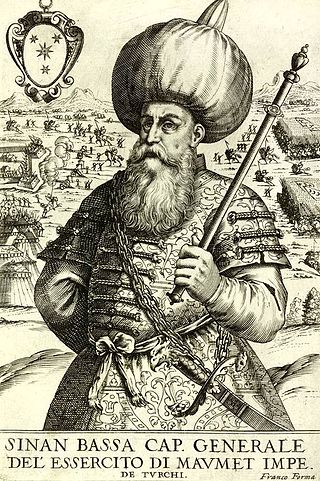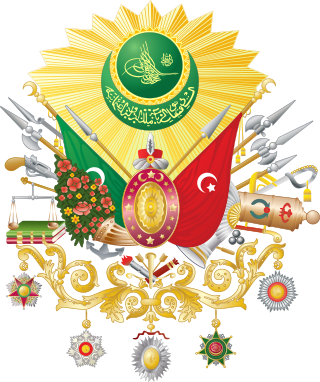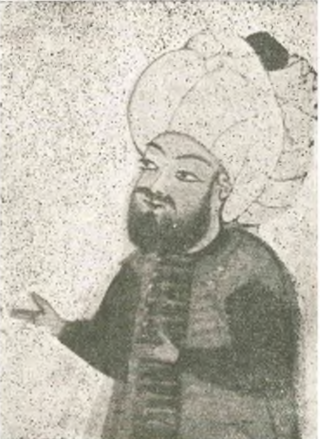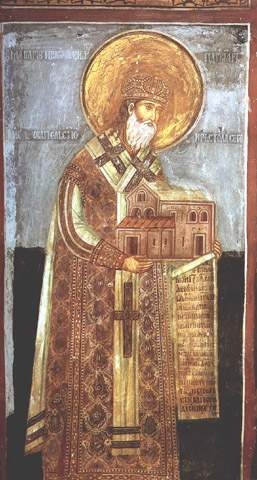
Ahmed II was the sultan of the Ottoman Empire from 1691 to 1695.

Mehmed III was the sultan of the Ottoman Empire from 1595 until his death in 1603. Mehmed was known for ordering the execution of his brothers and leading the army in the Long Turkish War, during which the Ottoman army was victorious at the decisive Battle of Keresztes. This victory was however undermined by some military losses such as in Győr and Nikopol. He also ordered the successful quelling of the Jelali rebellions. The sultan also communicated with the court of Elizabeth I on the grounds of stronger commercial relations and in the hopes of England to ally with the Ottomans against the Spanish.

Suleiman II was the sultan of the Ottoman Empire from 1687 to 1691. After being brought to the throne by an armed mutiny, Suleiman and his grand vizier Fazıl Mustafa Pasha were successfully able to turn the tide of the War of the Holy League, reconquering Belgrade in 1690, as well as carrying out significant fiscal and military reforms.

Köprülü Mehmed Pasha was Grand Vizier of the Ottoman Empire and founding patriarch of the Köprülü political dynasty. He helped rebuild the power of the empire by rooting out corruption and reorganizing the Ottoman army. As he introduced these changes, Köprülü also expanded the borders of the empire, defeating the Cossacks, the Hungarians, and most impressively, the Venetians. Köprülü's effectiveness was matched by his reputation.

Koca Sinan Pasha was an Albanian-born Ottoman Grand Vizier, military figure, and statesman. From 1580 until his death he served five times as Grand Vizier.

Mehmed Fuad Pasha, sometimes known as Keçecizade Mehmed Fuad Pasha and commonly known as Fuad Pasha, was an Ottoman administrator and statesman, who is known for his prominent role in the Tanzimat reforms of the mid-19th-century Ottoman Empire, as well as his leadership during the 1860 Mount Lebanon civil war in Syria. He represented a modern Ottoman era, given his openness to European-style modernization as well as the reforms he helped to enact.

The Battle of Zenta, also known as the Battle of Senta, was fought on 11 September 1697, near Zenta, Kingdom of Hungary, between Ottoman and Holy League armies during the Great Turkish War. The battle was the most decisive engagement of the war, and it saw the Ottomans suffer an overwhelming defeat by an Imperial force half as large sent by Leopold I, Holy Roman Emperor.

Ottoman Serbia refers to the Ottoman period in the history of Serbia. Various regions of medieval Serbia came under Ottoman rule already at the end of the 14th century, while the Serbian Despotate fell in 1459. Northern regions of what is now the Republic of Serbia were incorporated into the Ottoman Empire during later conquests, from 1521 to 1552. Since the Habsburg expansion towards those northern regions, in 1699 and 1718, Ottoman rule was gradually reduced to Serbian territories south of the Sava and Danube rivers (1739). From 1804 to 1830, the Principality of Serbia was gradually restored, as a vassal state of the Ottoman Empire. It gained independence in 1878, and expanded into southern regions, thus reducing Ottoman control to the historical region of the Old Serbia, that was liberated in 1912, thus ending Ottoman rule in Serbian lands.

The siege of Belgrade was a successful attempt by Habsburg troops under the command of the Elector of Bavaria Maximilian II Emanuel to capture the city of Belgrade from the Ottoman Empire. Part of the Great Turkish War (1683–1699), the siege lasted a month and culminated in the capture of the city on 6 September 1688. By conquering Belgrade, Habsburg forces gained an important strategic outpost, as the city had been the Ottoman's chief fortress in Europe for more than a century and a half. The Ottomans recaptured the city two years later, in October 1690. In 1693, Habsburg forces attempted to capture the city again, but failed.
The Malkoçoğlu family or Yahyali was one of the ghazi families of Serbian origin that led the akıncı corps in the Ottoman Empire between the 14th-16th centuries. They served mainly in the Balkan conquest of the empire. The members of the family usually served as beys, sanjak-beys, beylerbeys, pashas, and castle commanders. Later on, they joined the ranks of the Ottoman Army in various missions, and one of the descendants became a Grand Vizier.

The following outline is provided as an overview of and topical guide to the Ottoman Empire:
Cerrah Mehmed Pasha was an Ottoman statesman. He was grand vizier of the Ottoman Empire from 1598 to 1599.
Güzelce Ali Pasha, also known as Çelebi Ali Pasha or İstanköylü Ali Pasha, was an Ottoman statesman and military figure. He was Kapudan Pasha around 1617 and Grand Vizier of the Ottoman Empire from 1619 to 1621.

Mahmud Pasha Angelović was the Grand Vizier of the Ottoman Empire from 1456 to 1466 and from 1472 to 1474. He also wrote Persian and Turkish poems under the pseudonym Adni.

The capture of Belgrade was the recapture of Belgrade by the Ottoman Empire in 1739.

Halime Sultan was a consort of Sultan Mehmed III, and the mother of Sultan Mustafa I. The first woman to be Valide Sultan twice and the only to be Valide twice of a same son. She had at least four children with Mehmed: two sons Şehzade Mahmud and Mustafa I, and two daughters, Hatice Sultan and Şah Sultan. She was de facto co-ruler as Valide Sultan from 22 November 1617 to 26 February 1618 and from 19 May 1622 to 10 September 1623, because her son was mentally instable. Halime was also one of the prominent figures during the era known as the Sultanate of Women.

Gevherhan Sultan was an Ottoman princess, daughter of Sultan Ahmed I and Kösem Sultan, half-sister of Sultan Osman II, and sister of Sultans Murad IV (1623–1640) and Ibrahim of the Ottoman Empire.
Yeğen Osman Pasha or Yeğen Osman Aga was 17th-century Ottoman military officer of Armenian origin. After being commander of sekban units in Anatolia, he was appointed first to position of sanjakbey and serçeşme of the Sanjak of Karahisar-i Sahib. In 1687 for a couple of months he was also the beylerbey of Rumelia Eyalet, which was the highest position he held.
The Serbs in Turkey are Turkish citizens of Serbian descent or Serbia-born people who reside in Turkey.















